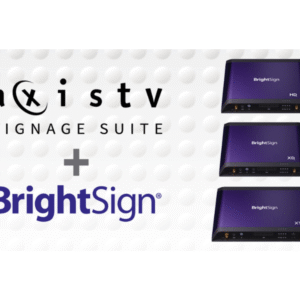When you’re running hundreds of classrooms across multiple buildings—or even campuses—consistency isn’t a luxury. It’s a necessity. That message came through loud and clear on the February episode of AVNation’s EDTech, recorded live on the show floor at ISE in Barcelona.
When AV is consistent, everyone wins.
Our guests, Patrick Angielczyk from Mohawk College and Teddy Murphy from the University of Pikeville, know the daily reality of higher ed AV. Between them, their teams support more than 500 learning spaces—and they’re doing it with just a handful of people. For institutions like theirs, classroom AV standardization isn’t just a best practice. It’s survival.
The Problem with Patchwork AV
“We’ve never really had a standard,” Patrick said. “We’re trying to not only upgrade our classrooms, but also to develop a standard so that we have the same user interfaces, user experience, from room to room to room.”
Sound familiar? Faculty members don’t want to relearn how to use the technology every time they walk into a new room. Support teams can’t afford the overhead of troubleshooting ten different systems across ten different spaces. When every room is its own unique setup, maintenance becomes a nightmare—and user satisfaction tanks.
Standardization Isn’t Just About Hardware
The conversation at ISE reinforced a growing truth in higher ed: AV standardization isn’t just about picking the same projector or DSP. It’s about creating a unified experience—one that gives faculty confidence, helps students stay focused, and allows support staff to solve issues fast.
“Maybe not every room can have all the bells and whistles,” said EDTech host Erin Maher-Moran, “but you can scale it and try to at least make something similar across the board.”
That mindset—balancing scale with simplicity—is where many institutions are headed. Whether you’re dealing with lecture halls, active learning classrooms, or huddle spaces, the goal is to create a seamless UI/UX from one room to the next.
Lessons from the Show Floor
At ISE, Patrick and Teddy both mentioned how eye-opening it was to see how European universities approach technology. The AV tech may look the same, but the philosophies vary—and there’s value in that perspective shift. As Patrick put it, “You name it, it’s all under one roof.” And that includes ideas worth stealing.
From immersive XR classrooms to advances in digital signage, what caught their attention wasn’t just flashy tech—it was tech that could be standardized, supported, and scaled back home.
The Real Win? Faculty Confidence
Standardization doesn’t just help the tech team. It helps faculty teach better.
If instructors walk into a room and know exactly how to start class, adjust audio, share content, or connect remote students, they’re more likely to embrace the technology—and less likely to call for help.
That’s the bottom line. When AV is consistent, everyone wins.
Want to hear the full conversation?
Listen to Episode 127 of EDTech from the ISE show floor—available now on AVNation.tv and wherever you get your podcasts.
 العربية
العربية 简体中文
简体中文 Nederlands
Nederlands English
English Français
Français Deutsch
Deutsch Italiano
Italiano Português
Português Русский
Русский Español
Español








